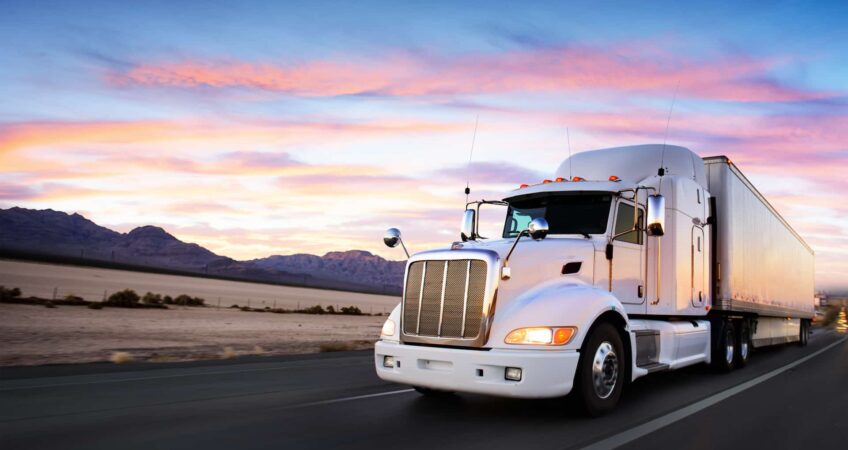
Interstate transport in Australia requires extensive planning, logistical considerations, and specialty equipment. To ensure a safe, efficient trip, we’ve put together this guide to interstate transport.
We’ll cover interstate transport methods for cars and boats, cost considerations, legal requirements, and more to help you decide on the right transport method.
How to Transport a Car Interstate: Car Transport Methods
If you’re deciding how to transport a car interstate, you have two main options: hiring a car transport service or driving it yourself. Here, we’ll look at the pros and cons of the main interstate car transport methods.
How to Transport Interstate: Professional Car Carriers
Professional interstate car transport offers the ultimate peace of mind and convenience. For long distances, hiring a professional car carrier can be more cost-effective than hauling a vehicle yourself.
Benefits of using a professional car carrier for interstate transport include:
- Save time
- Avoid adding unnecessary mileage and wear and tear on your vehicle
- Safe loading and unloading
- No planning or complex logistics to tackle
- Convenient
- Expertise, necessary insurance, and knowledge of any interstate regulations and restrictions
- Knowledge of the most efficient routes
Learn more about interstate car transport here: Car Transport Perth – Car Freight & Trucking Services.
How to Transport Interstate: Enclosed vs. Open Transport Options
- Open Car Transport: Open car transport is a popular option that involves hauling a vehicle on a trailer with no roof or sides. While it is more cost-effective, enclosed transport may be a better option for luxury or high-value vehicles.
- Enclosed Transport: Enclosed transport involves a closed trailer that completely shields the vehicle from the elements and offers high security. It is more expensive than open car transport.
How to Transport Interstate: Drive Yourself
Pros of driving yourself:
- Cost-effective transport method
- Eliminates the need to rent a trailer or hire a transport company
Cons of self-driving for interstate transport:
- The cost of lodging expenses (if necessary), fuel, and insurance can quickly add up
- Your vehicle will experience additional wear and tear
- Time consuming
- Extensive planning and vehicle preparation required
Key Considerations for Interstate Vehicle Transport
Cost Factors
Distance, time of year, route, and vehicle size all affect pricing. Here are tips that may help you save on interstate vehicle transport:
- If possible, plan ahead for the transport to occur during the off-season when demand is decreased. Slower demand often translates to cheaper pricing.
- If budget is your main issue, opt for open transport, which is cheaper than enclosed transportation.
- Try to plan a route with good access to help save on transport costs. Rural or remote areas often result in higher transport costs.
- Don’t leave transport for the last minute as a more flexible deadline will likely reduce overall costs.
Preparing Your Vehicle for Interstate Transport
Adequate preparation is crucial for getting your transporting your vehicle safely and without damage.
Here are some of the steps you’ll need to take to prepare a car for interstate transport:
- Clean Your Vehicle: Clean the inside and outside of your vehicle, including removing all personal belongings and loose items from inside the car. This cuts down on the risk of lost or damaged items during transport.
- Document Existing Damage: Make detailed notes of any existing dents, scratches, or other damage. Photos are a great way to document existing damage.
- Check the Vehicle Over: If you’re handling interstate vehicle transport yourself, make sure you check all fluid levels, coolant, brake fluid, engine oil, and the battery.
- Secure Any Loose Exterior Components: Any loose exterior components, including spoilers or antennas, must be secured for the transport process.
- Insurance Coverage: Ensure your car is protected during transit with the appropriate insurance coverage.
- Quarantine Regulations – Research and understand any state-specific rules regarding any transport restrictions or quarantine regulations.
How to Transport a Boat Interstate
Interstate Boat Transport Methods: Hire a Professional Transport Company
When planning how to transport a boat interstate, you’ll be choosing between a professional boat transport service or hauling it yourself.
With complex logistics and extensive safety considerations involved, we highly recommend a professional boat transport service.
Along with being a cost-effective way to transport your boat, a professional transport service can save fuel, time, and wear and tear on your towing vehicle.
Learn more about how to transport a boat interstate here: How Are Boats Transported? Safe & Efficient Boat Transport.
Interstate Boat Transport Methods: Tow It Yourself
It is possible to tackle interstate boat transport yourself but it involves complex logistics and extensive planning. Understanding all safety precautions and legal requirements and having the appropriate equipment is crucial.
Without proper preparation, you may damage your boat or towing vehicle, lose time and money, or put yourself or other motorists in danger.
If you do plan to tow a boat yourself, read the following section on the main preparation steps.
Preparation Steps for Interstate Boat Transport
Safely towing a boat interstate requires in-depth planning that includes:
- Securing the Boat – Ensuring safe and stable transport starts with securing the boat properly to the towing vehicle. Ensure all trailer connections are safe and secure and that you have the appropriate towing vehicle and trailer.
- Size Restrictions and Permits – Research and follow any regulations for oversized loads or state-specific transport regulations
- Planning Costs: Plan how much boat transport will cost by factoring in the distance, size of the boat, permits, fuel costs, trailer needed, and any special equipment required.
- Cleaning and Biosecurity Requirements – Research all state-specific rules regarding cleaning your boat before transport. Many states have specific biosecurity requirements to protect against the accidental spread of invasive marine species. Learn more about WA’s biosecurity requirements here: Marine biosecurity policy and legislation.
Key Considerations for Interstate Transport
Legal and Quarantine Requirements
Various states and regions have legal and quarantine requirements pertaining to interstate transport. Failure to know and follow these requirements can result in hefty fines and penalties.
For instance, the strict biosecurity laws in Tasmania may restrict vehicles or equipment from moving between states.
Always plan your route ahead of time and research any state-specific restrictions, quarantine requirements, and regulations you’ll need to follow.
Cost Factors
When planning interstate transport for a vehicle or boat, here are some of the main factors that impact pricing:
- Distance: Distance is usually the biggest factor that affects the cost of transport. Longer distances require increased time, fuel, and preparation, and result in higher fees.
- Vehicle, boat, or equipment size: Oversized vehicles or boats will cost more to transport as they require larger trailers, specialty equipment, and more fuel to move.
- Time of Year: Interstate transport will likely cost more during peak months when demand goes up. To save money on interstate transport, plan to move your car or boat during the off-season if possible.
- Open or Closed Transportation: Open car transport is cheaper than closed transportation.
- Time Requirements: Expedited transport will cost more while more flexible deadlines will be more budget-friendly.
- Route: Rural or remote areas with limited accessibility will require additional planning, fuel, and resources and result in higher transport fees. Alternatively, a highly popular route that has good access will likely be more cost-effective.
Insurance and Safety Measures
Transit insurance is non-negotiable. Make sure you have comprehensive transit insurance coverage to protect yourself and your vehicle or boat. If you opt to hire a transport company, double check they have all the required licensing and insurance coverage.
Ready to Move Heavy Loads with Confidence?
Interstate transport requires extensive planning, the right equipment and insurance, and knowledge of interstate regulations for a smooth, safe trip.
Whether you’re transporting a car, boat, machinery, or containers across Australia, Australia Wide Haulage makes it simple. Our expert team is ready to handle your interstate transport needs, getting your goods where they need to be – safely, on time, and hassle-free.
With a top-of-the-line fleet and years of experience, we deliver professional, cost-effective interstate transport solutions you can rely on. No job is too big or small – just tell us what you need, and we’ll take care of the rest.


